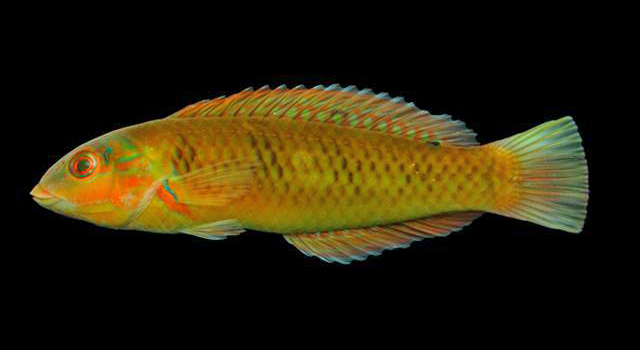| Labridae (Wrasses), subfamily: Corinae |
| 20 cm TL (male/unsexed) |
|
reef-associated; marine; depth range 1 - 70 m |
| Western Atlantic: southern Florida, USA and the Bahamas to São Paulo, Brazil (Ref. 57756). |
|
Dorsal spines (total): 9-9; Dorsal soft rays (total): 11-11; Anal spines: 3-3; Anal soft rays: 12-12. Small individuals yellowish green with a black spot, edged in light red, behind eye; a small black spot at rear base of dorsal fin. Large adult males are dull green, the centers of the scales with a dull orange red spot; caudal fin with a median longitudinal and upper and lower diagonal converging blue-edged rose bands (Ref. 13442). |
| Maximum depth from Ref. 126840. Commonly found in clear seagrass beds; uncommon on reefs or muddy bays (Ref. 9710). A protogynous hermaphrodite (Ref. 55367). Generally of no interest to fisheries because of its small average size (Ref. 5217). |
|
Least Concern (LC); Date assessed: 12 March 2008 Ref. (130435)
|
| harmless |
Source and more info: www.fishbase.org. For personal, classroom, and other internal use only. Not for publication.

